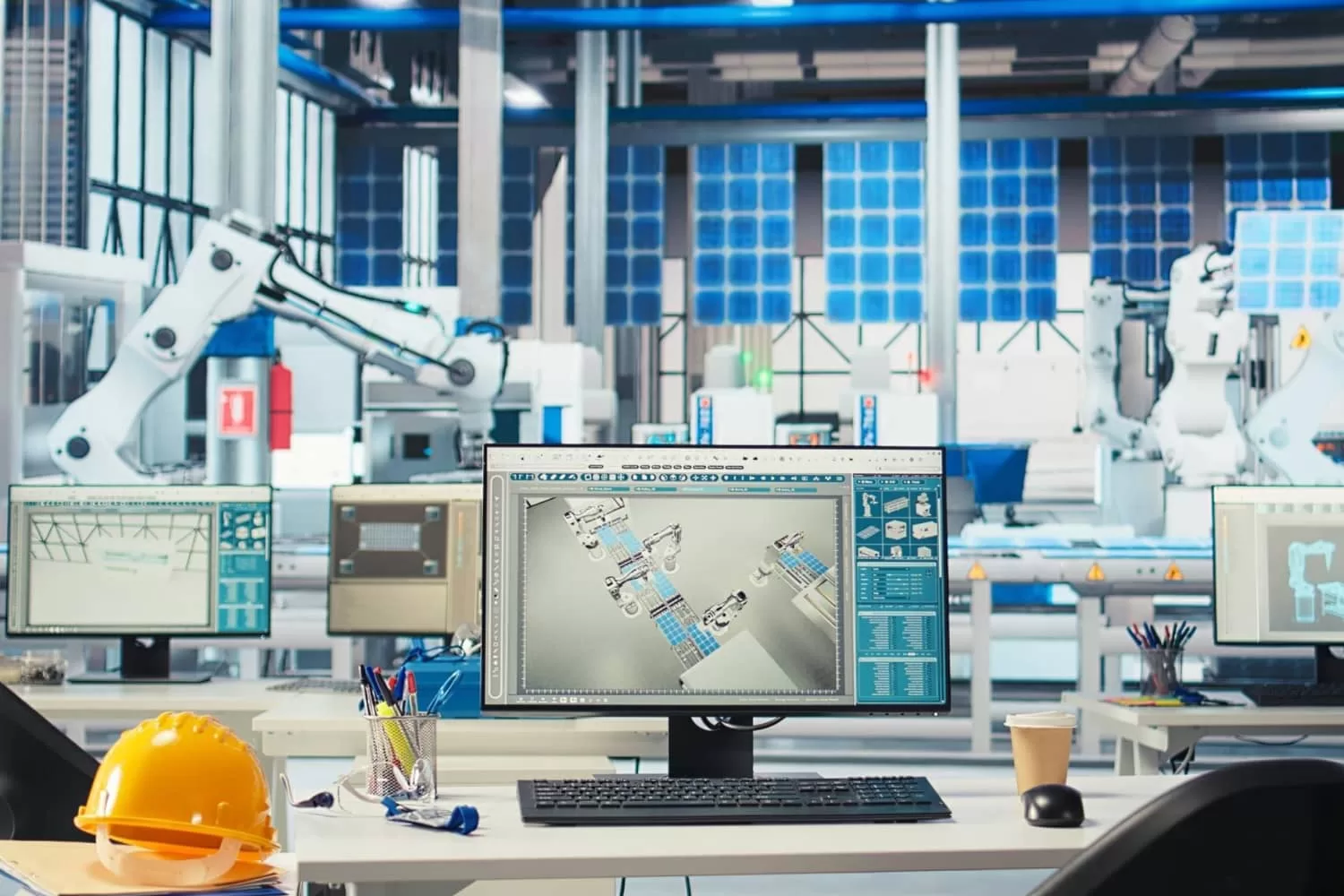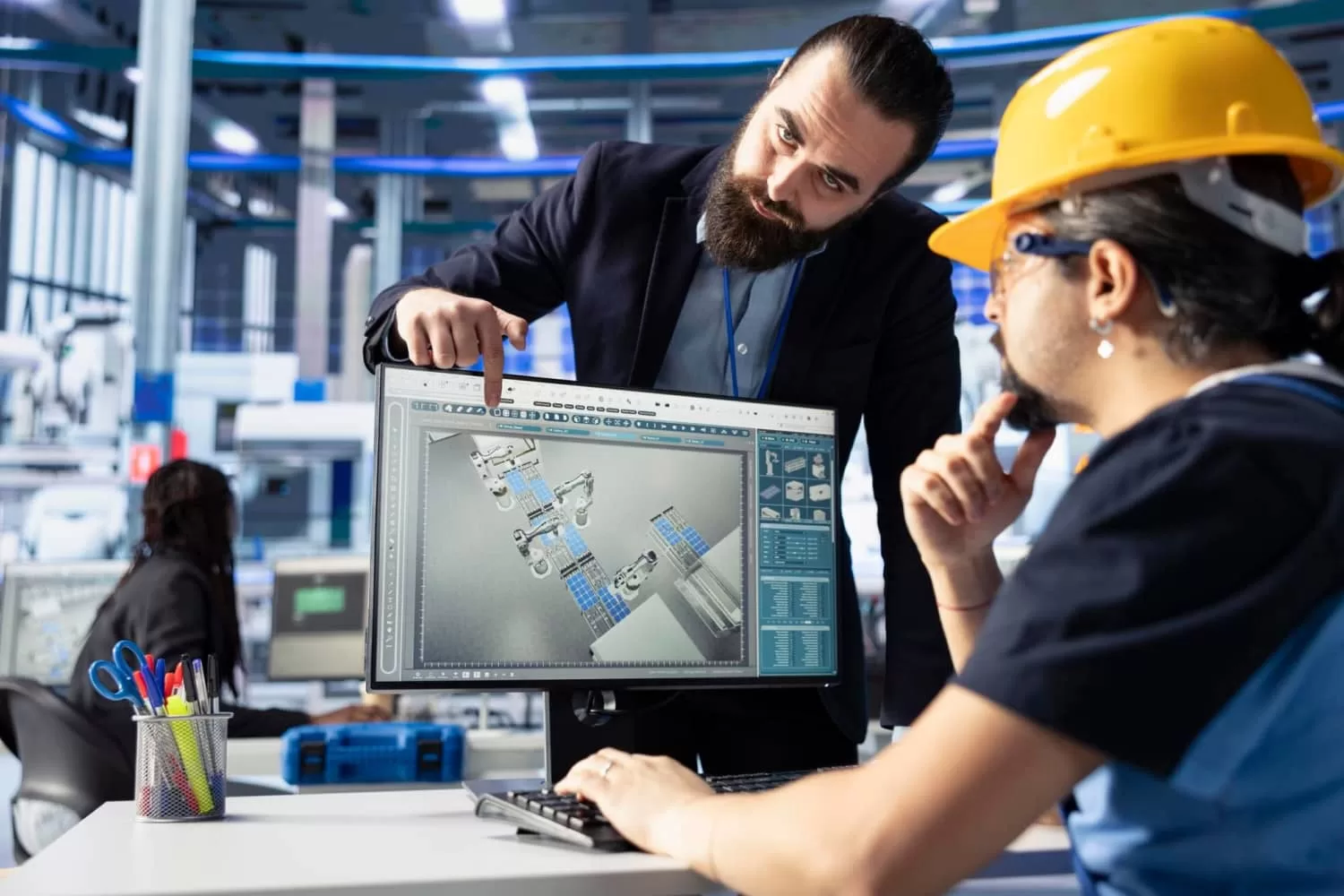When was the last time you evaluated whether your manufacturing processes are driving you forward or holding you back? Too often, businesses rely on outdated technologies simply because they have always worked. But today’s manufacturing technology offers opportunities that were not even possible a few years ago.
Let’s rethink and understand how modern manufacturing technology can turn your operation into a true competitive asset.
What Is Manufacturing Technology?
Manufacturing technology is the machines used to produce goods with greater efficiency, precision, and adaptability. It integrates automation, AI, the Internet of Things (IoT), cloud computing, robotics, and digital technology into modern production environments for faster workflows, smarter operations, and higher-quality outcomes.
6 Core Types of Manufacturing Technology

In order to turn potential into performance, it is important to understand the wide range of tools manufacturing technology offers. Let’s explore valuable six core types of manufacturing technology:
1. Computer-Aided Design (CAD)
CAD transforms how products are designed by allowing teams to create, modify, and optimize detailed 2D drawings and 3D models digitally. Now engineers as well as designers can simulate material interactions and run stress tests to evaluate product performance before manufacturing. CAD empowers better collaboration across engineering and production teams, reduces errors, and accelerates time to market.
It also integrates seamlessly with advanced manufacturing technology, such as Computer Numerical Control (CNC) machining to ensure digital designs precisely translate into manufacturable products.
2. Computer-Aided Manufacturing (CAM)
Computer-Aided Manufacturing (CAM) bridges between digital design and physical productions. It uses software to convert CAD models into precise instructions for CNC machines, automating the manufacturing process from start to finish. This manufacturing technology streamlines production planning and manages material flow, resulting in faster production cycles and greater quality consistency.
3. Industrial Robotics
Industrial Robotics are reprogrammable systems designed to handle repetitive tasks with consistent speed and accuracy. This machines can be easily adapted across processes. A typical robotic system combines mechanical components such as robotic arms, motors, sensors, electronic controls, and programmable software to boost efficiency and reliability across production lines.
4. 3D Printing (Additive Manufacturing)
3D Printing is a manufacturing technology that models three dimensional objects layer by layer from a digital design. This process supports complex geometries, internal structures, and customized designs that were originally difficult to produce.
Here the workflow of the process:
- The process begins with a 3D model created in CAD software.
- Specialized slicing software then converts the model into instructions for the printer.
- Layer by layer materials are solidified until the final objects take shape.
5. IoT Sensors for Real-Time Monitoring
IoT Sensors are small devices installed in machines and equipment to continuously track data such as temperature, vibration, pressure, and flow. The sensors send this data wirelessly to a central system to be analyzed instantly. This process helps manufacturers monitor equipment health, spot problems early, and plan maintenance before breakdowns happen.
A typical setup for this manufacturing technology includes sensors, wireless networks such as Wi-Fi, cellular, or private LTE, cloud computing for storage and analysis, and dashboards to display machine status and alerts. Some manufacturers also use edge computing and digital twin technology to further improve responsiveness.
6. AI for Process Optimization
This manufacturing technology helps companies improve production workflows with data-driven insights from manual adjustments and reactive problem-solving. AI analyzes large volumes of process data to uncover patterns and inefficiencies. With these insights, manufacturers can improve product quality, reduce costs, and boost overall operational productivity.
What are the Benefits of Manufacturing Technology?
Manufacturing technology helps businesses achieve greater productivity, quality, and long-term sustainability. If it is used effectively, it transforms operations that lead to new growth opportunities.
Here is how manufacturing technology delivers impact:
- Boosts productivity and efficiency by automating repetitive tasks and reducing human errors.
- Enables precise production to meet exact product specifications with advanced tools and technologies.
- Reduces operational costs and improves profitability through optimized materials, energy, and time use.
- Enhances workplace safety by minimizing human exposure to hazardous processes.
- Increases agility by enabling faster response to changing market demands and improving competitive positioning.
Build a Tech-Driven Factory in Indonesia with Subang Smartpolitan

Manufacturing technology continues to evolve and so should the environment where it operates.
Smart infrastructure, global connectivity, and Industry 4.0, Subang Smartpolitan brings these advantages together in one strategic hub.
Optimize energy use and advanced wastewater systems through smart infrastructure powered by IoT. Transport quickly across global supply chains through major transportation hubs such as Patimban Port, Kertajati Airport, toll roads and rail networks.
With strong integration of Industry 4.0 technologies, Subang Smartpolitan offers an ideal base for manufacturers who want to lead with technology. Learn how Subang Smartpolitan can power your next phase of innovation. Visit our website today!
FAQ Section
- What challenges do manufacturers face when integrating AI into production lines?
Challenges include data quality and availability, workforce skill gaps, high initial investment, system interoperability, and ensuring cybersecurity.
- How can additive manufacturing impact supply chain resilience?
3D printing enables localized, on-demand production, reducing reliance on complex supply chains, minimizing inventory, and improving responsiveness to disruptions.
- What strategies ensure successful digital transformation in manufacturing?
Clear vision, leadership commitment, workforce training, phased implementation, data governance, and choosing scalable, interoperable technologies.


